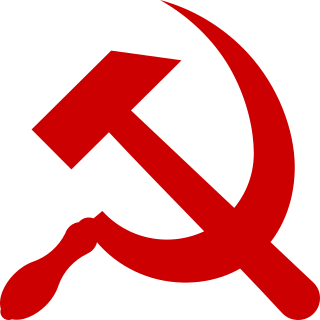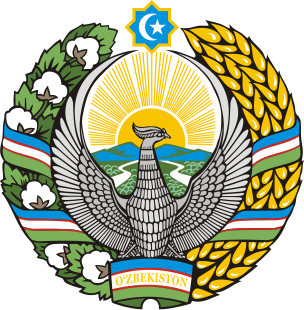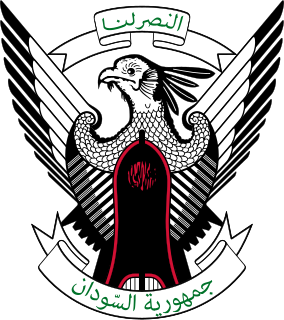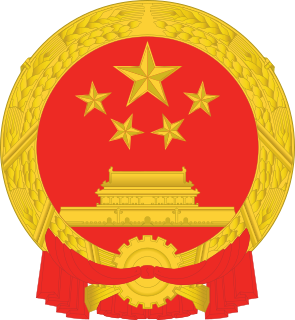
A coat of arms is a heraldic visual design on an escutcheon, surcoat, or tabard. The coat of arms on an escutcheon forms the central element of the full heraldic achievement which in its whole consists of: shield, supporters, crest, and motto. A coat of arms is traditionally unique to an individual person, family, state, organization or corporation.

The State Emblem of India, as the national emblem of the Republic of India is called, is an adaptation of the Lion Capital of Ashoka from 250 BCE at Sarnath, preserved in the Sarnath Museum near Varanasi, India. A representation of the Lion Capital of Ashoka was initially adopted as the emblem of the Dominion of India in December 1947. The current version of the emblem was officially adopted on 26 January 1950, the day when India became a republic.

The hammer and sickle is a symbol meant to represent proletarian solidarity – a union between the peasantry and working-class. It was first adapted during the Russian Revolution, the hammer representing the workers and the sickle representing the peasants.

The national emblem of Belarus, which replaced the historic Pahonia arms in a 1995 referendum, features a ribbon in the colors of the national flag, a map of Belarus, wheat ears and a red star. It is sometimes referred to as the coat of arms of Belarus. The emblem is an allusion to one that was used by the Byelorussian SSR, designed by Ivan Dubasov in 1950, with the biggest change being a replacement of the Communist hammer and sickle with an outline map of Belarus.
This article outlines the heraldic and non-heraldic national emblems used to represent France.

The state emblem of Uzbekistan was adopted on July 2, 1992. It is similar to the emblem of the previous Uzbek SSR. Like other post-Soviet republics whose symbols do not predate the October Revolution, the current emblem retains some components of the Soviet one. Prior to 1992, Uzbekistan had an emblem similar to all other Soviet Republics.

The current national emblem of Sudan was adopted in 1970.

Socialist heraldry, also called communist heraldry, consists of emblems in a style typically adopted by socialist states and filled with communist symbolism. Although commonly called coats of arms, most such devices are not actually coats of arms in the heraldic sense and should therefore not be called arms at all. Many communist governments purposely diverged from the traditional forms of European heraldry in order to distance themselves from the monarchies that they usually replaced, with actual coats of arms being seen as symbols of the monarchs.

The Government of Kerala headquartered at Thiruvananthapuram is a democratically elected body that governs the Indian State of Kerala. Governor is the constitutional head and Chief Minister is the democratically elected head of the State. The state government maintains its capital at Thiruvananthapuram (Trivandrum) and is seated at the Kerala Government Secretariat or the Hajur Kutcheri.

The State Emblem of the Soviet Union was adopted in 1923 and was used until the dissolution of the Soviet Union in 1991. Although it technically is an emblem rather than a coat of arms, since it does not follow traditional heraldic rules, in Russian it is called герб, the word used for a traditional coat of arms.
A national coat of arms is a symbol which denotes an independent state in the form of a heraldic achievement. While a national flag is usually used by the population at large and is flown outside and on ships, a national coat of arms is normally considered a symbol of the government or the head of state personally and tends to be used in print, on heraldic china, and as a wall decoration in official buildings. The royal arms of a monarchy, which may be identical to the national arms, are sometimes described as arms of dominion or arms of sovereignty.
Communist symbolism represents a variety of themes, including revolution, the proletariat, peasantry, agriculture, or international solidarity.

The Emblem of Uttar Pradesh is the official seal of the government of the Indian state of Uttar Pradesh. The emblem was originally designed in 1916 for the then United Provinces of Agra and Oudh and continued in use following Indian Independence in 1947.
This page is based on this
Wikipedia article Text is available under the
CC BY-SA 4.0 license; additional terms may apply.
Images, videos and audio are available under their respective licenses.









